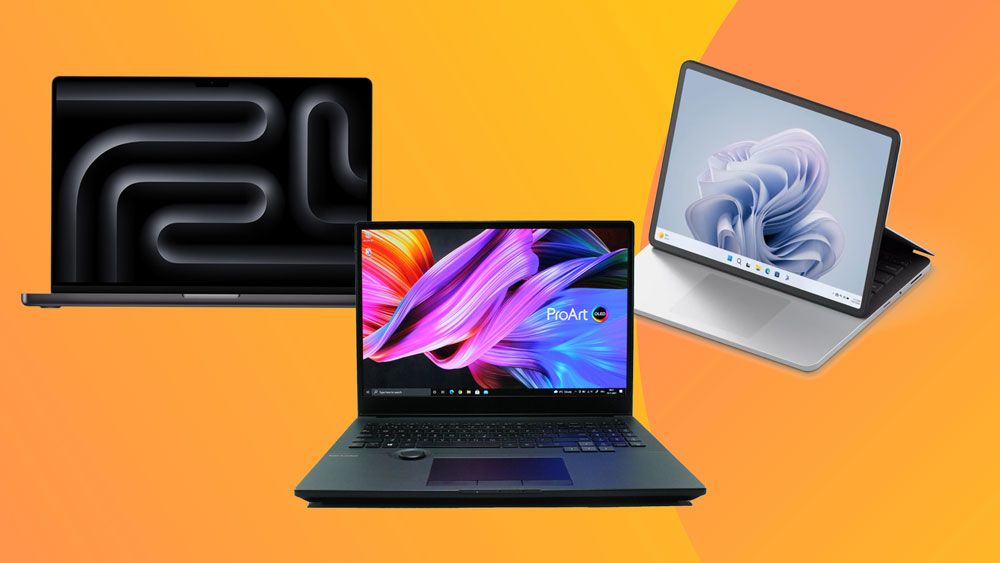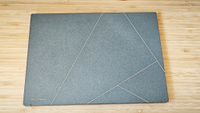
Jump to the quick list↴
1. Best overall
2. Best big-screen
3. Best touchscreen
4. Best Mac
5. Big-screen value
6. Best for portability
7. Best premium
Also tested
How to choose
How we test
FAQs
At one time, computer-aided design (CAD) relied on large, expensive, resource-hungry mainframes. Today, and particularly with the rise of 3D printing, CAD is used more widely than ever, and work can be carried out on a laptop, in turn broadening fields such as architecture, product design, interior design and fashion to many more creatives.
Having said that, 3D modelling applications such as the market leader AutoCAD still depend on relatively powerful hardware to run. The latest technology much reduces the form factor, but not any laptop will do. To help you choose the right laptop for your CAD projects, we’ve assembled this buying guide, which hopefully navigates the options and points you in the right direction.
Each laptop in our list has been tested to assess its suitability for various different CAD operations, and benchmarked for straight comparison purposes. (For more on this, check out how we test laptops.) This in-use testing and benchmarking has been combined with experience and expertise from our sister sites to ensure we recommend only the best. The outcome is a selection that includes laptops – both PC and Mac – with different levels of power, at varying price points, to meet the diverse needs of CAD users.
Aside from AutoCAD, a whole range of CAD software is available, including FreeCAD, Sketchup, BricsCAD, IntelliCAD, LibreCAD, BeckerCAD and more, but not all of these packages are available for Mac. Only the 2024 version of AutoCAD runs natively on Apple hardware, and some of its features are limited or missing, which may affect your workflow. See our FAQs at the bottom for further details.
You may also find our buying guide to the best laptop for graphic design useful in your search for the right computer.
Quick list
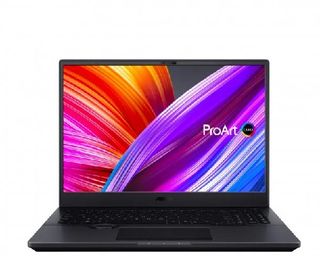 Best overall
Best overall
Asus’s ProArt Studiobook OLED is our top pick for CAD and AutoCAD users. It sports Intel’s most powerful 13th Gen CPU, up to Nvidia RTX 4070 graphics, a stunning 16-inch 3.2K OLED display and the very nifty Asus Dial rotary controller.
Read more below
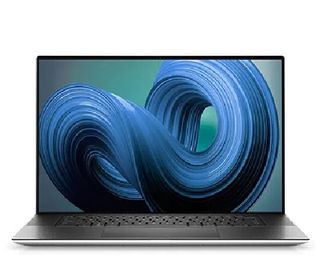 Best big-screen
Best big-screen
With its gorgeous screen and ample workspace, the Dell XPS 17 is a brilliant option that will have your eyeballs rejoicing as you zip through demanding CAD workflows. It’s impressively thin and light despite its size, and good-looking too.
Read more below
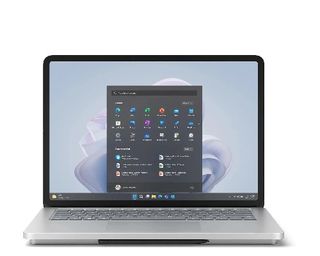 Best touch
Best touch
The Microsoft Surface Laptop Studio 2’s 2-in-1 feature sets it apart from most of its competition and we found in testing that the implementation is impressive. With great internals and well-designed interfaces, it’s a great touchscreen laptop for CAD.
Read more below
 Best Mac
Best Mac
The newest MacBook Pro boasts long battery life, a beautiful display, and the latest 3nm M3 chip for fast performance. Just make sure your CAD software has a Mac-compatible version, and be aware AutoCAD 2024 still has some missing features.
Read more below
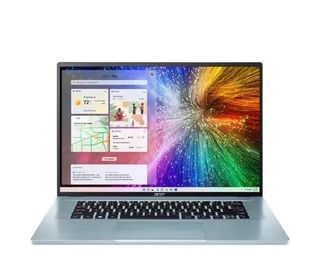 Big-screen value
Big-screen value
You can get a great laptop for CAD and AutoCAD without having to remortgage your home, in the form of the Acer Swift X 16. This laptop combines a large screen, relatively light weight and powerful components to make for a strong value offering.
Read more below
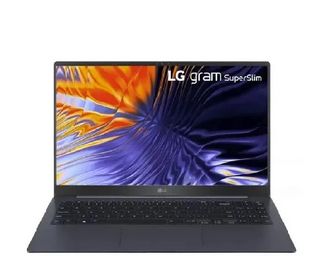 Best portable
Best portable
The LG gram was already a lightweight lineup, but the LG gram SuperSlim takes that to extremes. Weighing only 990 grams, this laptop is packed with enough processing power to handle any CAD task you can set it, outside the very heaviest, that is.
Read more below
Best overall for CAD
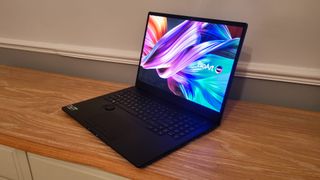
Specifications
Reasons to buy
Reasons to avoid
Asus ProArt Studiobook OLED is a gorgeous, state of the art 16-inch laptop with a stunning OLED display, Intel‘s finest 13th Gen CPU and a powerful Nvidia GPU.
It’s all wrapped up in a high-quality chassis that’s designed for getting serious work done. It includes the configurable ASUS Dial rotary control, which is a fantastic asset for CAD work, and we loved using it during any creative work in our tests. The OLED panel not only supports touch input and offers 3,200 by 2,000 pixels, but it also serves up an outstanding 100% coverage of the DCI-P3 colour space, so it’s super accurate, too, and will present your computer-aided designs in colour-popping detail.
ASUS has engineered in fully 160W of total CPU and GPU cooling, allowing the Intel i9-13980HX processor and NVIDIA GeForce RTX 4070 graphics chip to do their thing, and as we found in testing, it’s just about all the power you’ll ever need. You can have up to 32GB of RAM, which should cover even the most heavy-duty CAD workflows. And there are SSD storage options up to 8TB of super-fast PCIe Gen 4 spec. It’s a fabulous machine for getting CAD and other 3D work done.
Best big screen for CAD

Specifications
Reasons to buy
Reasons to avoid
Having a gorgeous, large screen with a high resolution can be a great help when designing in a CAD application, giving you more room to work, and to show off your projects to co-workers and clients. The Dell XPS 17 is a laptop worth considering, then, as it packs a fantastic 17-inch UHD+ screen with HDR, which is bright, vibrant and comfortable to work on, as we found out when we tested it.
The Dell XPS 17 also proves a large-screen laptop doesn’t have to be big and bulky. This is an impressively thin and light laptop, with the same attractive design found in the smaller Dell XPS 13 and XPS 15 laptops. It comes with some powerful components as well, including 13th Generation Intel Core processors, up to 64GB RAM and up to NVIDIA GeForce RTX 4080, 12GB GDDR6.
For more info, read our full Dell XPS 17 9710 review.
Best touchscreen for CAD
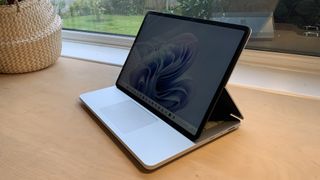
Specifications
Reasons to buy
Reasons to avoid
If you’re looking for something a little different, the Microsoft Surface Laptop Studio is a great choice. Not only does it have a gorgeous versatile design, but it has an excellent PixelSense touchscreen that will make your work look its very best. The screen can also offer a zippy refresh rate of up to 120Hz. That touch screen in particular will be of interest to many thanks to its stylus compatibility (although you have to buy the stylus separately).
There’s plenty more to like too. We think it’s got an excellent keyboard, powerful specs (including cutting-edge integrated graphics from either Intel or NVIDIA, depending on the configuration you go for), so any CAD application runs with ease. That’s especially true now that this second-gen device has been updated with Intel’s latest CPUs and Nvidia RTX 40 series graphics.
We found in our tests that it also boasts very impressive battery life, plus build quality and ergonomics to die for. All in all, it’s a fantastic showcase for Windows 11. For more on why we rate this Microsoft portable so highly, see our review of the Surface Laptop Studio 2.
Best Mac for CAD
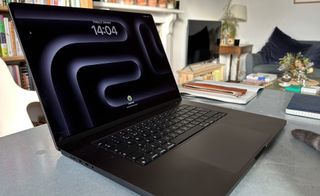
Specifications
Reasons to buy
Reasons to avoid
If you have CAD software that’s Mac-comptabile, the MacBook Pro 16-inch with an M3 Pro or Max processor is a stellar option. If you haven’t bought your software yet, though, take care.
For example, the 2024 Mac version of AutoCAD is not quite the same as the Windows iteration and lacks some features that might be key for you, such as 3D Rendering and Drawing History. As for other CAD software, check out the specifications before you buy. For instance, many have Mac-compatible versions but some of these may not be suitable for MacBooks specifically.
The MacBook Pro comes in 14- and 16-inch versions, and you can select the M3 Max chip if you need supercharged power. We lean toward the 16-inch model for that extra screen space for CAD work. But in terms of processing power, you can’t go wrong.
As we found in our review, even the entry-level M3 in the base 14-inch is no slouch and the M3 Max is an absolute monster. All MacBook Pros also offer stellar battery life that most high-performance Windows laptops can only dream of. This means you can visit clients, work on the road and much more, all without worrying about having to plug it in. Read our full MacBook Pro M3 review for the full lowdown.
Want something thinner, lighter and cheaper, but still a Mac? Check out our MacBook Air (M2) 2022 review.
Best big-screen laptop for CAD for value
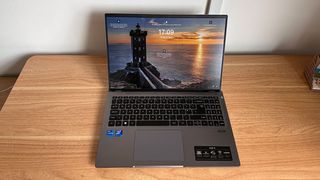
Specifications
Reasons to buy
Reasons to avoid
If a big screen and budget top your list of laptop priorities, the Acer Swift X 16 will have a lot of appeal. And if you’re just starting out in CAD or 3D modelling work you’ll want something super-useable that won’t break the bank.
It manages to offer a big screen and decent power for a very reasonable price, especially now that we’re seeing prices dip below a grand. As we found when we reviewed it, battery life may not be stellar, and it’s not the most exciting design, but it’s what’s inside that counts, and in that regard, the Acer Swift X 16 delivers.
It’s a solid laptop, with lots of connectivity options, a quality 3200×2000 display to view your designs in splendid detail and the keyboard offers a comfortable typing experience. In 2024, Acer has updated the chipsets to AMD and NVIDIA, adding further power to the package. Read our full Acer Swift X 16 review for the full verdict on this capable laptop.
Best CAD laptop for portability

Specifications
Reasons to buy
Reasons to avoid
Thin and light used to mean weak and weedy, too. But not these days. The LG gram SuperSlim will impress most users. It is light, thin and very easy on the eye. The inclusion of a beautiful 15.6-inch OLED display makes this device a joy to look at while working on your designs. While it lacks a discrete graphics card, it will do nicely for the vast majority of CAD workflows. The OLED display, while topping out at 1920×1080 Full HD resolution, is bright and sharp, and our reviewer specifically pointed out that it’s perfect for creators.
You also get a healthy 16GB of RAM and a fast NVMe SSD. And it’s packed into an incredibly light package that weighs only 990g. That’s not that much more than an iPad Pro, and this is an entire laptop including keyboard.
Battery life is good too, if you need to work on the go, and in our tests we managed to eke out around 15 hours in between charges. Very heavy work will reduce that a little, but you’ll still get through an entire workday on battery power alone. Yes, the resolution could be higher, especially for the price you’re paying, and the speakers (though unnecessary for CAD) are poor, but the LG gram SuperSlim is a very good choice indeed. Read more in our full LG gram SuperSlim review.
Best premium laptop for CAD

Specifications
Reasons to buy
Reasons to avoid
The MSI Creator Z17 is a large laptop made for professional creatives, and it has a lot of power inside, with options up to 64GB of RAM, oodles of storage and a bright, 17-inch touchscreen. For most CAD workflows, this laptop may be overkill, but if you work on top-end designs, and especially if you need to add some motion rendering, this MSI will chew it up and grind it into a pulp without breaking a sweat. It certainly mulched through anything we threw at it.
It sports 100% coverage of the DCI-P3 gamut, and the touchscreen has a 4,096-level pressure sensitivity, if you want to work directly on the screen, and our performance tests put it on par with an M2 MacBook Pro.
On the downside, it weighs 2.5kg so it’s not exactly ultraportable. Also, while the battery is big, the power demands of the internal components mean it drains faster than we’d prefer, so you will need to keep an eye on the nearest power outlet (and nearby chiropractors) if you’re out and about. Unfortunately, that goes with the territory of this class of ultra-powerful Windows laptops. See our full MSI Creator Z17 review here.
Also tested
While the options above may be our top choices for various elements of CAD and AutoCAD work, there are a lot of laptops out there worthy of your attention. We’ll be constantly updating the list of other laptops we’ve tested that you should feel confident in using in your CAD work, so if none of the above quite does it for you, all hope isn’t lost: you might just find your future workmate below.
ASUS Zenbook S 13 OLED
The screen may not be the biggest, but this ultraportable model more than makes up for it with its bright, sharp OLED display, 32GB of RAM and great ergonomics. It’s the ultimate in portability at only 1kg (less than an iPad Pro with a keyboard attached). Fantastic for CAD work on the go.
Read our 4.5-star review.
FAQs
What is CAD/AutoCAD?
CAD stands for computer-aided design. CAD software allows you to model and render designs digitally in areas such as architecture, furniture design, interior design, fashion and more. This can be done in 2D and 3D, and different types of software will be relevant for each.
AutoCAD is one of the leading pieces of CAD software, developed by Autodesk, which can be used for 2D and 3D creations.
Can all laptops run AutoCAD?
In short, yes, but there are differences between how AutoCAD runs on Windows and Mac.
AutoCAD is a computer-aided design and drafting software application developed by Autodesk. Used to create computer-aided designs, it’s been around since 1982, and is very much the industry standard for all the professions we’ve mentioned. The requirements for the latest version of AutoCAD are as follows:
- Processor: 2.5GHz (3+ GHz recommended)
- Memory: 8GB (32GB recommended)
- Disk space: 10GB
- Display: 1920 x 1080 resolution
There is a separate AutoCAD 2024 for Mac, which closes the gap between using AutoCAD on Windows and Mac. AutoCAD can now run on Apple silicon for the first time, meaning the experience is almost the same as on Windows when using a Mac with an M2 or M3 chip. However, there are still a few missing features such as 3D Rendering and Drawing History.
Can AutoCAD run on Mac?
Historically there has been a big difference between how AutoCAD runs on Mac and Windows, with the Mac version missing a lot of the functionality. However, AutoCAD 2024 has been designed to run natively on Apple hardware with an M-series processor such as the M1, M2 or the new M3 Max. This means that the experience running AutoCAD on a Mac is similar to a Windows PC, though there are still a few key features missing and the interface is a little different.
What’s missing from AutoCAD for Mac 2024? The Mac version does not support 3D rendering, no support for Drawing History, you can’t extract object data to tables, share/use data from DGN files, Navisworks and Bing Maps, apply and monitor CAD standards and there is less access to specialised toolsets.
We recommend checking thoroughly to see what your workflow demands before relying on AutoCAD for Mac.
What hardware is most important for AutoCAD?
Your CPU, GPU, RAM and screen size are some of the most important factors when considering which laptop to buy. Here’s a little rundown to help you understand what is important in each category.
CPU: It’s worth knowing that Autodesk recommends a 3+ GHz processor with a 4+ GHz turbo but anything above 2.5GHz will be fine. There’s no need to spend excessively on the number of cores because AutoCAD majors on single threaded processes which are perfectly calculated on a powerful CPU. The latest generation Intel or AMD processors will handle AutoCAD with ease.
GPU: Having a dedicated graphics card is essential but make sure it’s DirectX 12 compliant. Other than that, any NVIDIA GeForce, NVIDIA Quadro, or AMD Radeon with at least 8GB of video memory and 106GB/s Bandwidth will be sufficient. If you are primarily working with 2D CAD tasks then consumer grade cards with enough video memory will work great.
RAM: Even though Autodesk recommends 32GB of system memory, in reality it can function fine on as little as 8GB. Considering memory is so affordable, it would be worth aiming for 32GB or 64GB. Ensuring that it’s DDR5 will help reduce power consumption while at the same time increasing bandwidth.
Screen: Most users choose the biggest screen they can afford – ideally a 16- or 17-inch laptop – to make those complex designs as easy to navigate as possible. If you’re going to extend your display to other monitors though, you can get away with a much smaller screen size knowing that you won’t be using it for this type of work.
How to choose
If you want to run AutoCAD, you’re best off looking at a laptop with the latest Intel Core i7 or Core i9 chips, but how powerful a machine do you need in practice? That really depends on what kind of work you’re doing in CAD.
If you’re considering a MacBook, bear in mind that 3D and CAD software doesn’t run identically on Mac processors, though comparable versions are available for most of the software options. AutoCAD is the one to watch here, as only the 2024 version runs on a Mac, and it still has some differences that might not work for your needs (see above). Be sure to check before you buy.
Actually, much CAD work doesn’t need an uber-powerful machine, especially if you’re working in 2D. However, working in 3D will be more demanding and will need a more powerful laptop.
In general, the more complex and large-scale your projects, the more power you’ll need and the more you’ll have to spend, especially if you’re also looking for your laptop to run heavier 3D modelling software. But many software types are less power-hungry, meaning you can get away with a less powerful computer.
For longevity, the ideal machine will have high-end components, including an abundance of RAM, a multi-core processor and a dedicated graphics card that can manage complex work. However, if you’re working on relatively simple projects, you’ll probably be happy with meeting the minimal requirements.
For design work, you’ll also want a large screen to reduce eye strain and so that your work can be displayed to its fullest. While you’ll need to consider battery life, the power in these laptops means this is where you might need to compromise. Here, we’ve aimed for laptops with enough battery to get through the day.
How we test
Testing a laptop for CAD work starts with considering the overall specification of the machine. Does it have a balanced setup with evenly matched core components, including the CPU, GPU and RAM? It’s no good pairing a cutting-edge CPU with barely any memory and vice versa.
We then run benchmarks to ensure that the key components are delivering their full performance, so you can rely on every last bit and hertz to make the most of your CAD workflow. Laptops are much more prone to thermal and power issues than desktops, so you can’t assume that a given processor or graphics chip will perform the same in every portable system. That said, there are minimum specs that you have to look out for in general. You need a 2.5GHz process (3+ GHz recommended), at least 8GB of RAM (great if it’s 32GB or above), a Full HD display (1920×1080) at a minimum and at least 10GB of disk space.
Storage performance tends to be more consistent between desktop and mobile. However, laptop makers rarely provide detailed specifications for the SSDs they fit. So we test for sequential throughput and random access to make sure no below-par drives sneak through.
As for screen quality, the last word in colour accuracy isn’t typically essential for CAD workflows. However, a screen with at least 95% coverage of the DCI-P3 colour space is always a good idea. A sensitive touch screen is very useful if you like to design with a stylus. It’s also a good idea to go with a high pixel density panel for sharp fonts and viewing fine details in designs.
We assess all these hardware qualities when considering how suitable a laptop is for CAD workflows, alongside ergonomics, build and usability, including keyboard quality, chassis rigidity, trackpad response and more. For more options, see our pick of the best laptops for game development.
